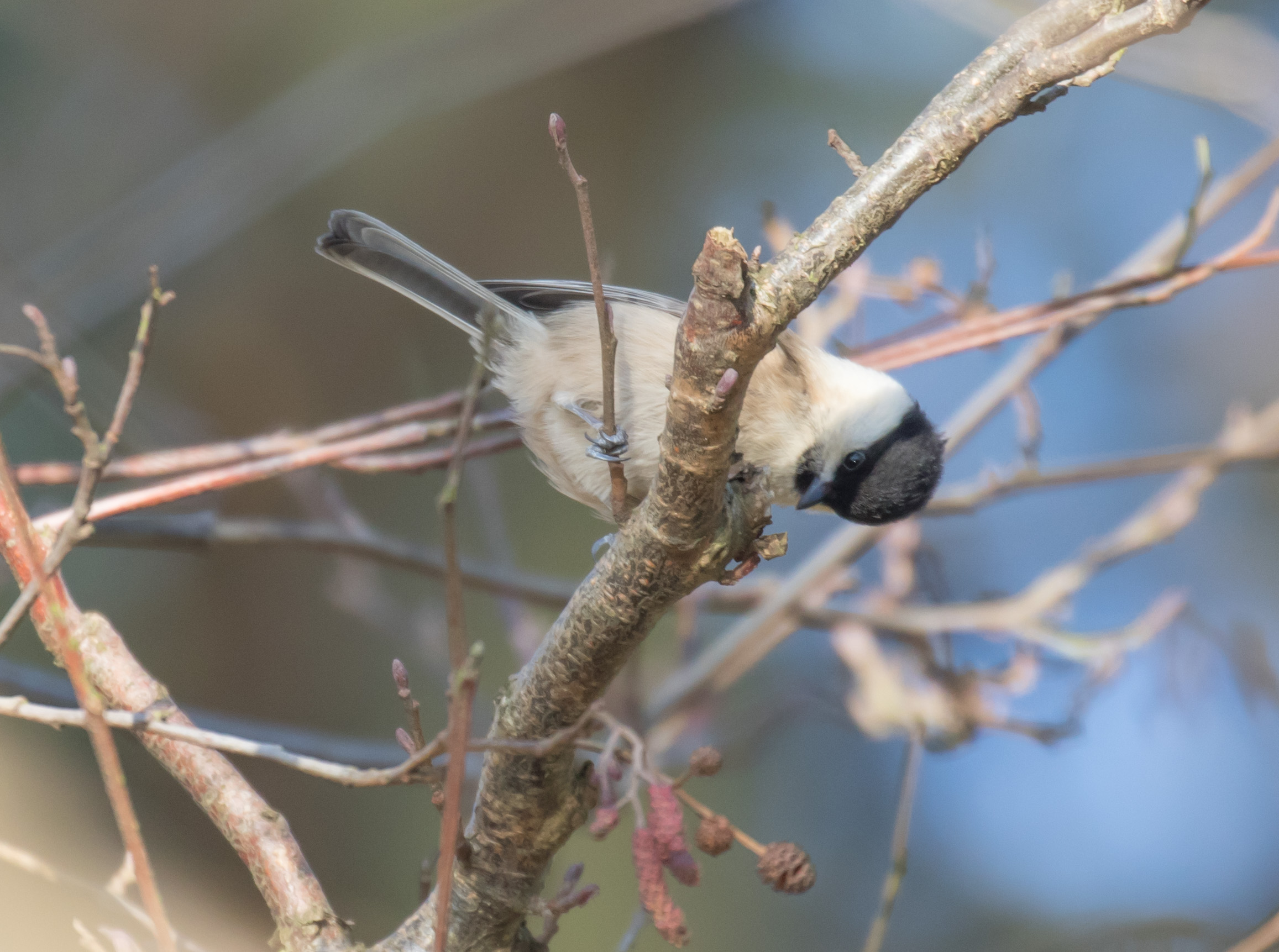Personally I have never found distinguishing Marsh and Willow Tits particularly easy. The scolding “taah, taah, taah” call of Willow Tit was always a good basis, but that wasn’t helpful in birds which did not call. In silent birds the pale wing panel and more bull-necked appearance of Willow Tits seemed the best features, though these seemed more obvious in birds that I saw in Europe than in British Willow Tit candidates. Then in 2009 British Birds published updated criteria for separating these two similar species. The size of the bib and the glossy cap of Marsh Tit were demoted as less reliable features. The most reliable criteria seemed to be song, call, an unmarked upper mandible in Willow Tit and a strong contrast between the white cheeks and the pale brown neck sides in Marsh Tit:
This morning Dave Lowe and I paid a visit to the wood just north of Grimsbury Reservoir in Banbury, pretty much the only reliable site in the county for seeing Willow Tit. It was a cold, sunny morning but we worked our way through the riverside trees finding Goldfinches, Siskins, a single Lesser Redpoll and Blue, Great, Coal and Long-tailed Tits. After about 15 minutes I picked out an all dark-headed Tit in trees on the far bank of the River Cherwell:
Fortunately, it and another similar bird, did the decent thing and flew across to our side of the river where we enjoyed good views of this pair of birds feeding in the wood. On three occasions we heard the “taah, taah, taah” call and at no time the loud “pitchoo” of Marsh Tit. Both birds had a pale wing panel, formed by pale creamy edges to the tertials and secondaries, though these were more obvious in one bird than the other. This was the bird with the brighter pale wing panel:

Meeting the other criteria for Willow Tit on the other bird required some work! In bright sun some images seemed to show that there were pale markings on the bill (but could this be reflected sunlight?): 
But it was the contrast between the white ear coverts and the pale brown neck sides, of which there is little in Willow Tit, but much contrast in Marsh Tit, that I struggled with the most. Both the pictures above and below do show a clear contrast between the white ear coverts and the buff neck sides on this bird, a better feature for Marsh Tit:
Compare the buff colour of the neck area behind the ear coverts on the two images above with the clean white colour on the bird with the brighter wing panel, below:

I posted some of the above pictures on the Oxon Birding website as Willow Tits at Grimsbury Reservoir and Richard Broughton came to the rescue:
“Hi Tom, definitely Marsh and a Willow in those pics – maybe the nightmare scenario of a mixed pair! Pics 1, 4 & 5 are Marsh, the others are Willow. Cheek pattern (white/grey) and pale bill mark are definitely there in the Marsh (see especially pic 5 where the bill is in shade, and the white mark shows nicely). Clear dark bill on the willow in pic 3, and undertail also shows the graduated tail tip (at least 3 feather tips visible in steps, sometimes shown by adult marsh, but generally a good pointer for willow). Pic 2 also shows willow tit pattern on greater coverts – dark centres and contrasting pale margin (new feature: http://nora.nerc.ac.uk/id/eprint/517411). Had another report of mixed pair up north last year – the Marsh Tit was even ringed as a Willow by mistake (out of usual range), and seemed paired with a Willow. Oddly, it seemed to be mimicking willow calls when associating with Willows, and only gave a pitchoo call in response to playback. There a record in the literature of a mixed pair attending a nest, so they might be able to hybridise (never been proven genetically). Cheers, Richard”.
If both species are present, then extra caution is required when looking out for Willow Tit at this site in Oxfordshire! All in all a thoroughly enjoyable and instructive morning.

Nice one. Dipped n Willow Tits with Steve in Devon back in Jan. Still keen to see one “properly” to undo a stringy tick from way back 🙂